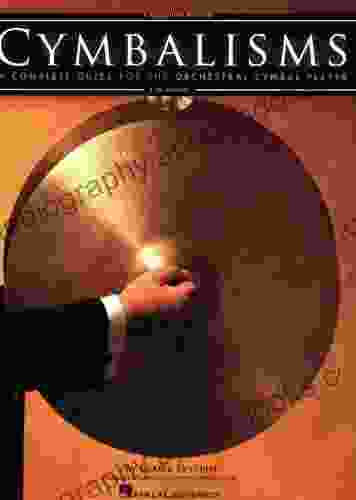A Brief History of Communication for Development and Social Change

Communication is a powerful tool that can be used to promote development and social change. Throughout history, communication has been used to educate, inform, and mobilize people to take action on important issues.
This article provides a brief history of communication for development and social change, from its early roots to its current state-of-the-art practices. We will explore the key theories, models, and campaigns that have shaped this field, and we will discuss the challenges and opportunities that lie ahead.
5 out of 5
| Language | : | English |
| File size | : | 1072 KB |
| Text-to-Speech | : | Enabled |
| Screen Reader | : | Supported |
| Enhanced typesetting | : | Enabled |
| Print length | : | 202 pages |
The Early Years
The field of communication for development and social change has its roots in the early 20th century. At this time, there was a growing awareness of the need to use communication to improve the lives of people in developing countries.
One of the pioneers of communication for development was Edward Filene. In 1919, Filene founded the Twentieth Century Fund, which supported research on the use of communication to promote social change.
Another early pioneer was Paul Lazarsfeld. In the 1940s and 1950s, Lazarsfeld conducted a series of studies on the effects of mass media on public opinion. These studies helped to lay the foundation for the field of communication for social change.
The Communication for Development Movement
In the 1960s and 1970s, there was a growing movement to use communication to promote development in developing countries. This movement was led by a number of organizations, including the United Nations Development Program (UNDP),the World Bank, and the Ford Foundation.
The communication for development movement focused on using communication to:
* Educate people about important issues * Change people's attitudes and behaviors * Mobilize people to take action
One of the most successful communication for development campaigns was the Green Revolution. This campaign used a variety of communication channels to promote the adoption of new agricultural technologies in developing countries. The Green Revolution helped to increase food production and improve the lives of millions of people.
The Social Change Movement
In the 1960s and 1970s, there was also a growing movement to use communication to promote social change in developed countries. This movement was led by a number of organizations, including the National Association for the Advancement of Colored People (NAACP),the Southern Christian Leadership Conference (SCLC),and the American Civil Liberties Union (ACLU).
The social change movement used communication to:
* Raise awareness of important issues * Mobilize people to take action * Change public policy
One of the most successful social change campaigns was the Civil Rights Movement. This campaign used a variety of communication channels to raise awareness of the plight of African Americans and to mobilize people to demand change. The Civil Rights Movement helped to achieve a number of important victories, including the passage of the Civil Rights Act of 1964 and the Voting Rights Act of 1965.
The Present State of Communication for Development and Social Change
Today, communication for development and social change is a global field that encompasses a wide range of activities. Communication for development and social change practitioners work in a variety of settings, including:
* Governments * Non-governmental organizations (NGOs) * Private sector companies * International organizations
Communication for development and social change practitioners use a variety of communication channels to reach their target audiences. These channels include:
* Mass media * Social media * Interpersonal communication * Participatory communication
Communication for development and social change practitioners also use a variety of theories and models to guide their work. These theories and models include:
* The diffusion of innovations theory * The social marketing theory * The behavior change communication theory * The participatory communication theory
Communication for development and social change is a challenging but rewarding field. Communication for development and social change practitioners have the opportunity to make a real difference in the world by helping people to improve their lives and create a more just and equitable society.
Challenges and Opportunities
The field of communication for development and social change is facing a number of challenges. These challenges include:
* The growing gap between rich and poor * The rise of fake news and misinformation * The increasing complexity of global issues
Despite these challenges, there are also a number of opportunities for communication for development and social change practitioners. These opportunities include:
* The growth of new communication technologies * The increasing awareness of the importance of communication for development and social change * The growing demand for communication for development and social change services
Communication for development and social change is a field with a rich history and a bright future. Communication for development and social change practitioners have the opportunity to make a real difference in the world by helping people to improve their lives and create a more just and equitable society.
Communication is a powerful tool that can be used to promote development and social change. Throughout history, communication has been used to educate, inform, and mobilize people to take action on important issues.
The field of communication for development and social change is a global field that encompasses a wide range of activities. Communication for development and social change practitioners work in a variety of settings and use a variety of communication channels to reach their target audiences.
The field of communication for development and social change is facing a number of challenges. However, there are also a number of opportunities for communication for development and social change practitioners.
Communication for development and social change is a field with a rich history and a bright future. Communication for development and social change practitioners have the opportunity to make a real difference in the world by helping people to improve their lives and create a more just and equitable society.
5 out of 5
| Language | : | English |
| File size | : | 1072 KB |
| Text-to-Speech | : | Enabled |
| Screen Reader | : | Supported |
| Enhanced typesetting | : | Enabled |
| Print length | : | 202 pages |
Do you want to contribute by writing guest posts on this blog?
Please contact us and send us a resume of previous articles that you have written.
 Book
Book Novel
Novel Page
Page Chapter
Chapter Text
Text Story
Story Genre
Genre Reader
Reader Library
Library Paperback
Paperback E-book
E-book Magazine
Magazine Newspaper
Newspaper Paragraph
Paragraph Sentence
Sentence Bookmark
Bookmark Shelf
Shelf Glossary
Glossary Bibliography
Bibliography Foreword
Foreword Preface
Preface Synopsis
Synopsis Annotation
Annotation Footnote
Footnote Manuscript
Manuscript Scroll
Scroll Codex
Codex Tome
Tome Bestseller
Bestseller Classics
Classics Library card
Library card Narrative
Narrative Biography
Biography Autobiography
Autobiography Memoir
Memoir Reference
Reference Encyclopedia
Encyclopedia Alan D Hemmings
Alan D Hemmings Patricia Wentworth
Patricia Wentworth Aldous Huxley
Aldous Huxley Alex Gerlis
Alex Gerlis M C Beaton
M C Beaton Pravin Shinde
Pravin Shinde Red Phoenix
Red Phoenix Alan Titchmarsh
Alan Titchmarsh Sai Aascharyanandha
Sai Aascharyanandha Andrea Renato Arnaboldi
Andrea Renato Arnaboldi Kelly M Greenhill
Kelly M Greenhill Ron Howell
Ron Howell Hal Brunson
Hal Brunson Daniel Macdonald
Daniel Macdonald Shelley Cohen Konrad
Shelley Cohen Konrad Malcolm Haddon
Malcolm Haddon Christy Barritt
Christy Barritt Elana Wilson Rowe
Elana Wilson Rowe Akshat Srivastava
Akshat Srivastava Brian E Fogarty
Brian E Fogarty
Light bulbAdvertise smarter! Our strategic ad space ensures maximum exposure. Reserve your spot today!
 Scott ParkerFollow ·7.7k
Scott ParkerFollow ·7.7k Michael ChabonFollow ·17.1k
Michael ChabonFollow ·17.1k Herman MelvilleFollow ·9.8k
Herman MelvilleFollow ·9.8k Walt WhitmanFollow ·12.2k
Walt WhitmanFollow ·12.2k Percy Bysshe ShelleyFollow ·6.7k
Percy Bysshe ShelleyFollow ·6.7k Henry HayesFollow ·17.5k
Henry HayesFollow ·17.5k Efrain PowellFollow ·14.2k
Efrain PowellFollow ·14.2k Jules VerneFollow ·8.9k
Jules VerneFollow ·8.9k

 W. Somerset Maugham
W. Somerset MaughamBach Dialogue With Modernity: A Journey Through Time and...
Prelude: Bach's Timeless...

 Ted Simmons
Ted SimmonsAsher Heroes At Heart Maryann Jordan: The Essential Guide...
Are you ready to...

 Paulo Coelho
Paulo CoelhoVienna Spies: Uncover the Hidden World of Espionage in...
Vienna has long...

 Herman Melville
Herman MelvilleThe Complete Guide to Orchestral Cymbal Playing:...
Step into the vibrant...

 Rubén Darío
Rubén DaríoEscape into a Holiday Haven with California Christmas...
Embark on a heartwarming and festive journey...
5 out of 5
| Language | : | English |
| File size | : | 1072 KB |
| Text-to-Speech | : | Enabled |
| Screen Reader | : | Supported |
| Enhanced typesetting | : | Enabled |
| Print length | : | 202 pages |













